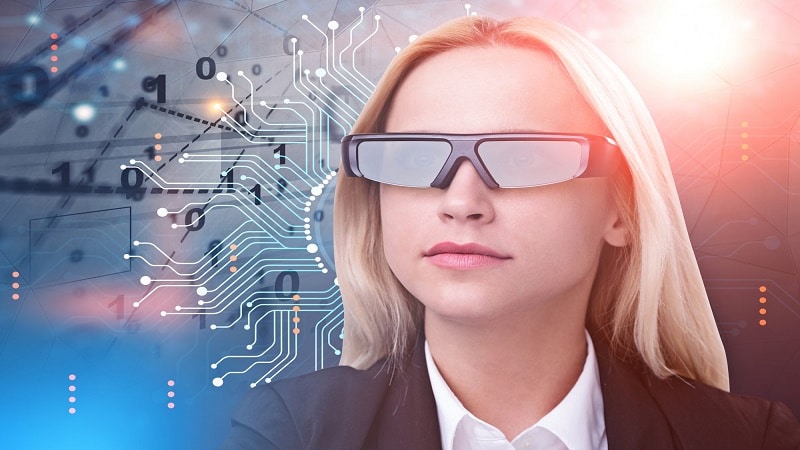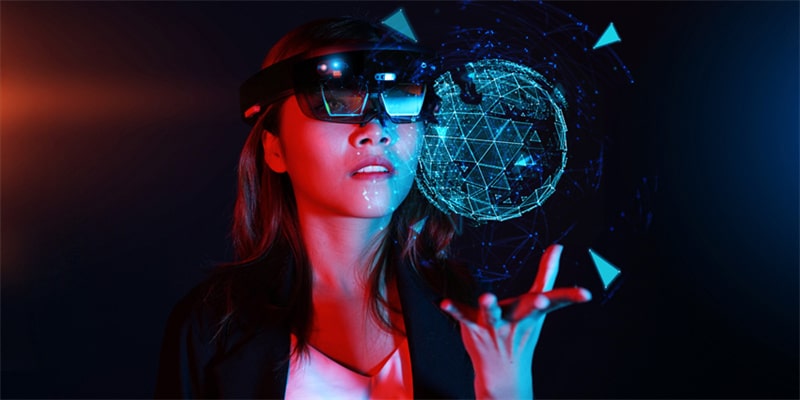
Smart eyeglasses have emerged as a revolutionary form of wearable technology, combining the functionality of traditional eyewear with advanced features like augmented reality (AR), voice control, and health monitoring.
As wearable technology continues to gain popularity, smart eyeglasses have captured the imagination of tech enthusiasts and consumers alike.
How Do Smart Glasses Work?

At their core, smart glasses consist of several key components that work in tandem to deliver an immersive and interactive user experience. Let's explore the essential elements and processes that make smart glasses function:
- Optical Display System: The optical display system is one of the most critical components of smart glasses. It enables the projection of virtual information onto the wearer's field of view, enhancing their perception of the world. Various display technologies are employed in smart glasses, including waveguide-based displays, holographic displays, and microLED arrays.
- Sensors: Smart glasses incorporate a range of sensors to gather data about the user's surroundings and enable interactive experiences. These sensors provide information about the wearer's head movements, spatial orientation, and lighting conditions, allowing the smart glasses to adjust the virtual overlays accordingly.
- Processing Unit: A powerful onboard processing unit is integral to smart glasses. It handles the computational tasks necessary to generate and render the augmented reality content in real-time. The processing unit consists of CPUs (Central Processing Units), GPUs (Graphics Processing Units), and specialized chips designed for specific AR tasks.
- Connectivity: Smart glasses often rely on wireless connectivity to access data and communicate with external devices. This connectivity allows the glasses to access online content, retrieve real-time information, and receive software updates.
- User Interface and Control Mechanisms: Interacting with smart glasses is possible through various user interfaces and control mechanisms. These mechanisms include touch-sensitive frames, voice commands, gesture recognition, and eye-tracking technology.
- Software and Applications: The software running on smart glasses manages the user interface, processes sensor data, and renders augmented reality content. AR software frameworks and development kits provide the tools and libraries necessary for developers to create applications specifically designed for smart glasses.
Applications and Benefits
The applications of smart eyeglasses span various domains. They have the potential to revolutionize productivity by offering users the ability to access information, notifications, and reminders without the need for additional devices.
Imagine displaying your calendar, emails, and important data right before you. Smart eyeglasses also hold tremendous potential for accessibility, assisting visually impaired individuals through real-time object recognition and audio feedback.
Additionally, smart eyeglasses have the potential to transform the field of vision care by enabling remote eye exams on the internet, allowing individuals to conveniently monitor their vision health and receive accurate prescriptions without the need for in-person visits to an optometrist.
In entertainment, smart eyeglasses offer immersive gaming experiences where users can see virtual objects integrated into their real-world environment. Furthermore, they can transform how we consume media, allowing for personalized content delivery and creating a virtual cinema experience right in front of our eyes.
Popular Smart Eyeglasses
Several popular smart eyeglasses are available today, each offering unique features and functionalities. Let's explore some of the notable smart eyeglasses and discuss what sets them apart:
Google Glass
Google Glass is one of the most well-known smart eyeglasses that gained significant attention upon its release. It features a small transparent display that rests above the wearer's right eye, allowing for hands-free access to information. Google Glass offers voice commands, touch gestures, and a built-in camera for capturing photos and videos.
Microsoft HoloLens
Microsoft HoloLens is an advanced mixed-reality headset that combines virtual and augmented reality experiences. It features a holographic display that overlays virtual objects onto the real world, providing an immersive and interactive user experience. HoloLens is primarily designed for developers and enterprise use cases, such as design visualization, remote collaboration, and training simulations.
Vuzix Blade
Vuzix Blade is a sleek pair of smart glasses that integrates augmented reality functionality into a stylish eyewear design. It features a discreet display that projects information directly into the wearer's field of vision. Users can access notifications, make calls, and interact with virtual content with built-in voice control. The Vuzix Blade is targeted toward consumers and offers a range of applications, including navigation, fitness tracking, and smartphone integration.
North Focals
North Focals (formerly known as North by Thalmic Labs) is known for its focus on fashionable smart glasses. Focals use a holographic display to project information, such as messages, weather updates, and directions, onto the lens. The glasses are controlled through a discreet ring-like device called the Loop, which provides a touchpad for navigation. North Focals prioritize fashion-conscious consumers seeking smart glasses that seamlessly blend into their everyday style.
Epson Moverio
Epson Moverio smart glasses cater to both consumer and enterprise markets. Their transparent display offers an augmented reality experience that overlaps digital information with the real world. Moverio glasses are powered by an Android-based platform, providing access to various apps. These glasses find applications in gaming, entertainment, drone piloting, and industrial use cases.
Challenges and Limitations

Despite their potential, smart eyeglasses face several challenges and limitations. Battery life and power consumption remain key concerns, as these devices require continuous power to support their advanced features. Additionally, the design and comfort of smart eyeglasses are crucial for user acceptance.
Striking a balance between functionality and aesthetics is necessary to ensure widespread adoption. Privacy and security also emerge as significant concerns, as smart eyeglasses have the potential to capture and transmit personal data. Lastly, affordability and accessibility are important factors that must be addressed to make smart eyeglasses more accessible to the general public.
Market Outlook and Future Trends
The market for smart eyeglasses is expected to witness significant growth in the coming years. Display technology will continue to improve, becoming more compact and less obtrusive, enhancing the overall user experience.
As these devices become more mainstream, we can expect integration with other wearable devices and the Internet of Things (IoT) ecosystem, creating a seamless and interconnected user experience.
Furthermore, smart eyeglasses hold immense potential in various industries, such as healthcare, manufacturing, and logistics. Hand-free access to information and real-time data can greatly improve efficiency and safety.










